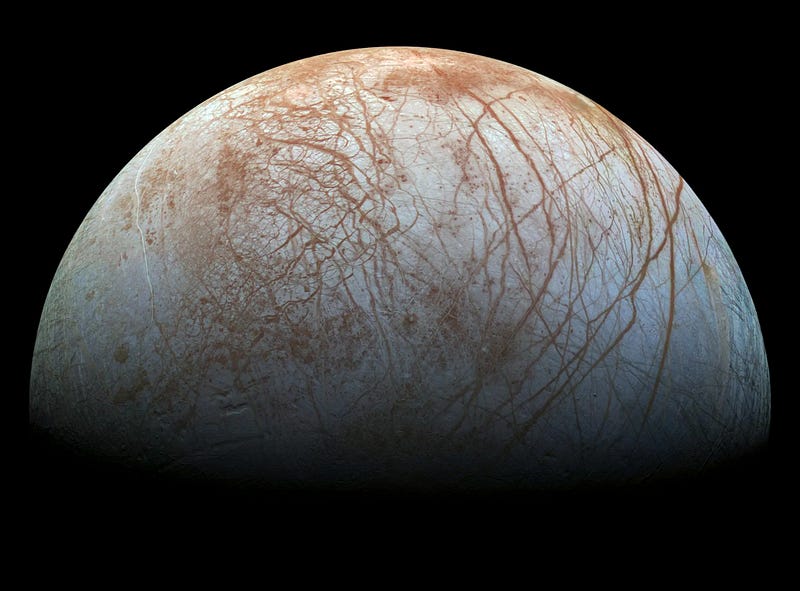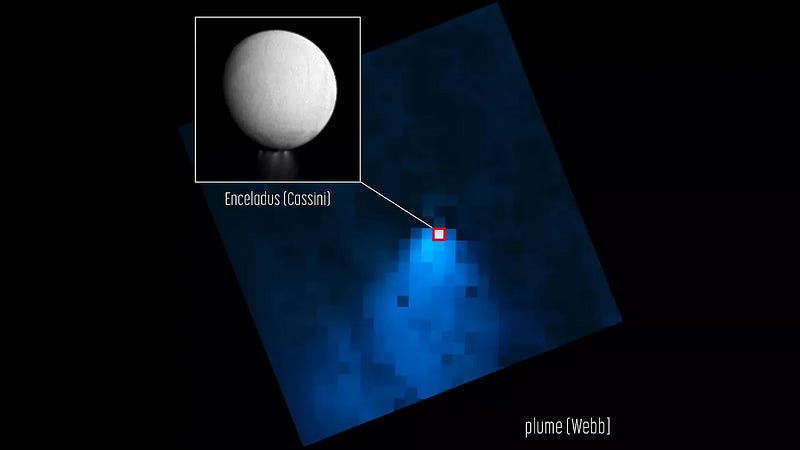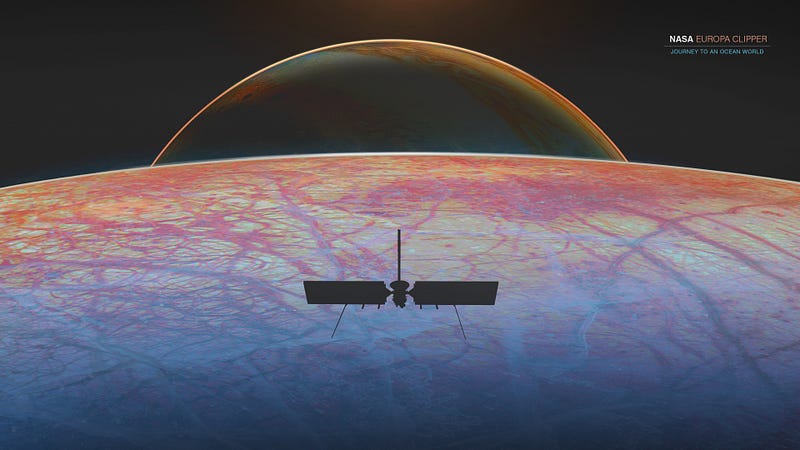# Astronomers Discover Carbon on Europa's Surface with Webb Telescope
Written on
Chapter 1: Europa's Potential for Life
Jupiter’s moon Europa, known for its vast subsurface ocean, is among the top candidates for harboring extraterrestrial life in our solar system. Recent studies released by two independent research teams have identified carbon dioxide on its icy exterior, thanks to observations made with the James Webb Space Telescope.

This stunning image of Europa, captured by NASA’s Galileo spacecraft in the late 1990s, is the most detailed view of the moon to date.
In late September, the two research groups utilized the James Webb Space Telescope to examine Europa, one of the four largest moons of Jupiter, known collectively as the Galilean moons after their discoverer. With its presumed deep ocean beneath a layer of ice, Europa has garnered significant attention as a prime candidate for life beyond Earth.
During their analysis, both teams discovered carbon dioxide ice concentrated in a region referred to as Tara Regio, characterized by its geologically youthful and disrupted terrain, known as “chaos terrain.” This suggests a dynamic interaction between the ocean beneath and the icy surface.
“Prior observations from the Hubble Space Telescope indicated the presence of ocean-derived salts in Tara Regio. Our findings of concentrated carbon dioxide imply that this carbon likely originates from the internal ocean,” explained Samantha Trumbo of Cornell University, lead author of one of the studies.

This graphic showcases Europa’s surface as captured by Webb’s NIRCam (Near Infrared Camera) alongside compositional data derived from Webb’s NIRSpec/IFU (Near Infrared Spectrograph’s Integral Field Unit).
Carbon is a crucial element for life, as all known life forms on Earth are carbon-based. While the possibility of silicon-based life has been explored, carbon-based life forms are seen as more plausible, given our experiences on Earth.
“Life on Earth thrives on chemical diversity — the greater the diversity, the better. As carbon-based life forms, understanding the chemical makeup of Europa’s ocean will reveal whether it is inhospitable to life as we know it or potentially a suitable environment for life,” remarked Geronimo Villanueva of NASA’s Goddard Space Flight Center, the lead author of another paper presenting Webb’s findings.
The detection of carbon dioxide emanating from Europa's ocean carries two significant implications for astronomers. First, it suggests the moon could be hospitable to marine life, as carbon dioxide is vital for life as we know it. Second, it opens up new avenues for investigating Europa’s subsurface ocean without the need for costly drilling missions.

This image shows Enceladus, another icy moon, with water plumes being observed by Webb.
While researchers were also on the lookout for water vapor plumes during their study of Europa, they did not find conclusive evidence. The Hubble Space Telescope has previously detected such plumes, but their absence during this investigation does not exclude the possibility of sporadic activity.
In earlier studies, water plumes on Saturn’s moon Enceladus were successfully identified using Webb. Like Europa, Enceladus harbors a liquid ocean beneath its icy shell, and the plumes have revealed a high concentration of organic materials in its water. Scientists aspire to analyze a plume from Europa to gain deeper insights into the chemical composition of its ocean.
“There are only a few places in our solar system that are potentially habitable for life as we understand it. The icy moons of Europa and Enceladus stand out because we believe there are substantial bodies of liquid water beneath their ice crusts, possibly even larger than those on Earth,” stated Geronimo Villanueva from NASA’s Goddard Space Flight Center.

This is the promotional poster for NASA’s Europa Clipper mission, scheduled to launch in October 2024.
In the coming decade, astronomers will gain unprecedented access to Europa and the other Galilean moons of Jupiter through two upcoming probe missions. The European Space Agency’s JUpiter ICy moons Explorer (JUICE), which launched in April 2024, is expected to reach Jupiter by July 2031. Meanwhile, NASA’s Europa Clipper is slated for launch in October 2024, aiming for arrival in April 2030. Both missions will conduct flybys of Europa, capturing images and analyzing the moon's chemical composition to assess its potential for supporting life.